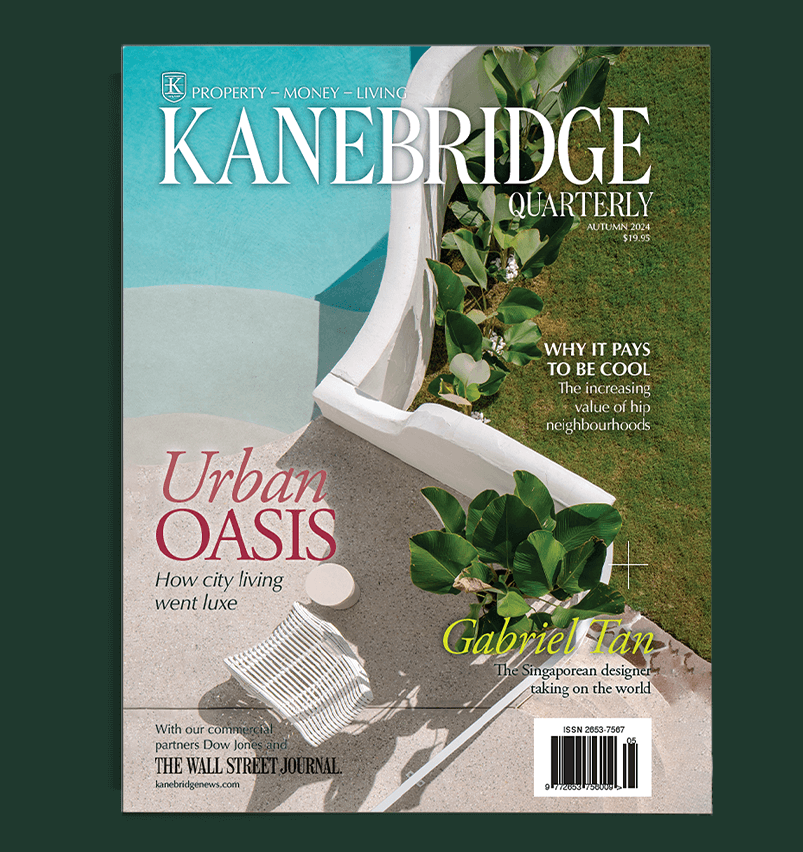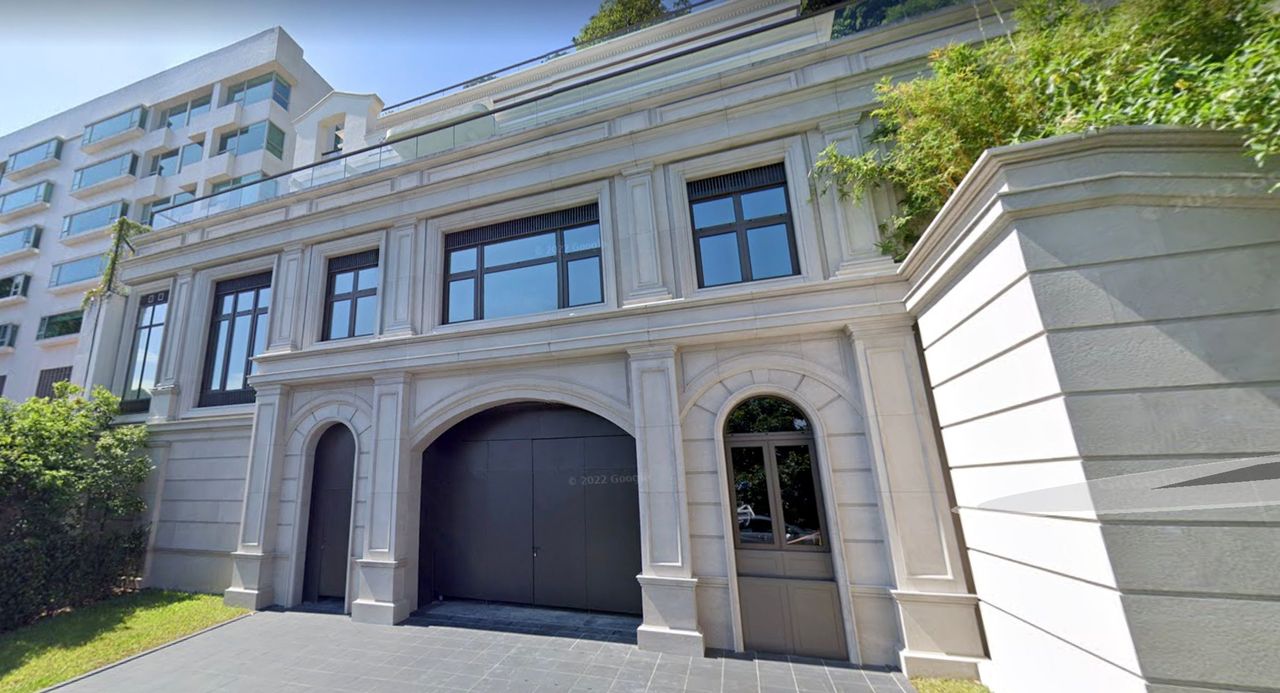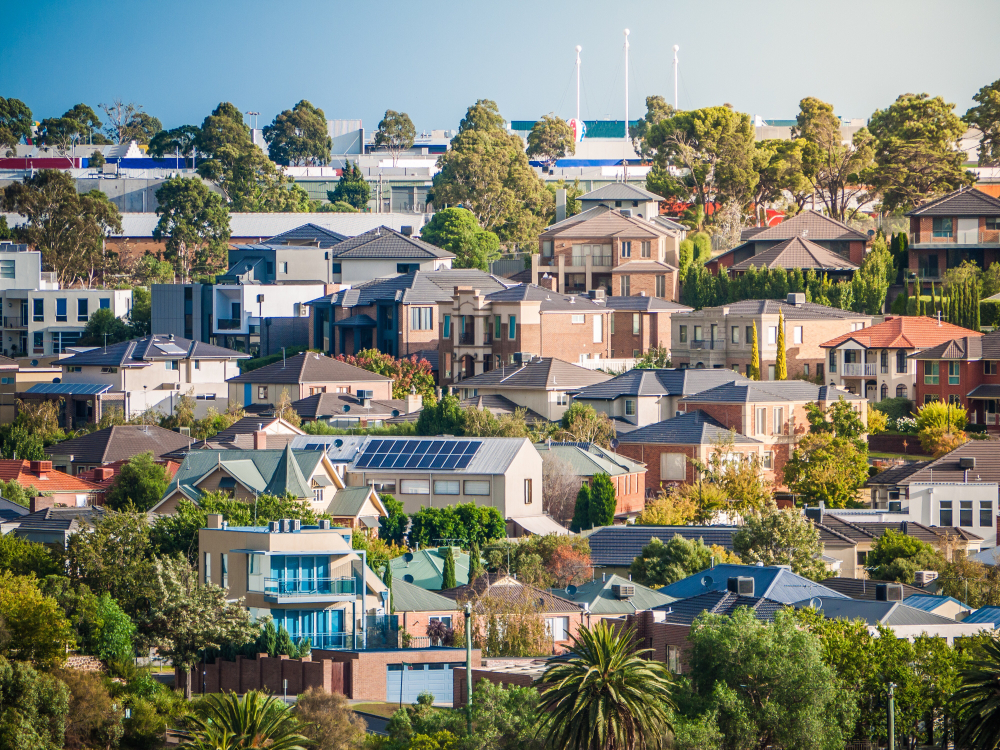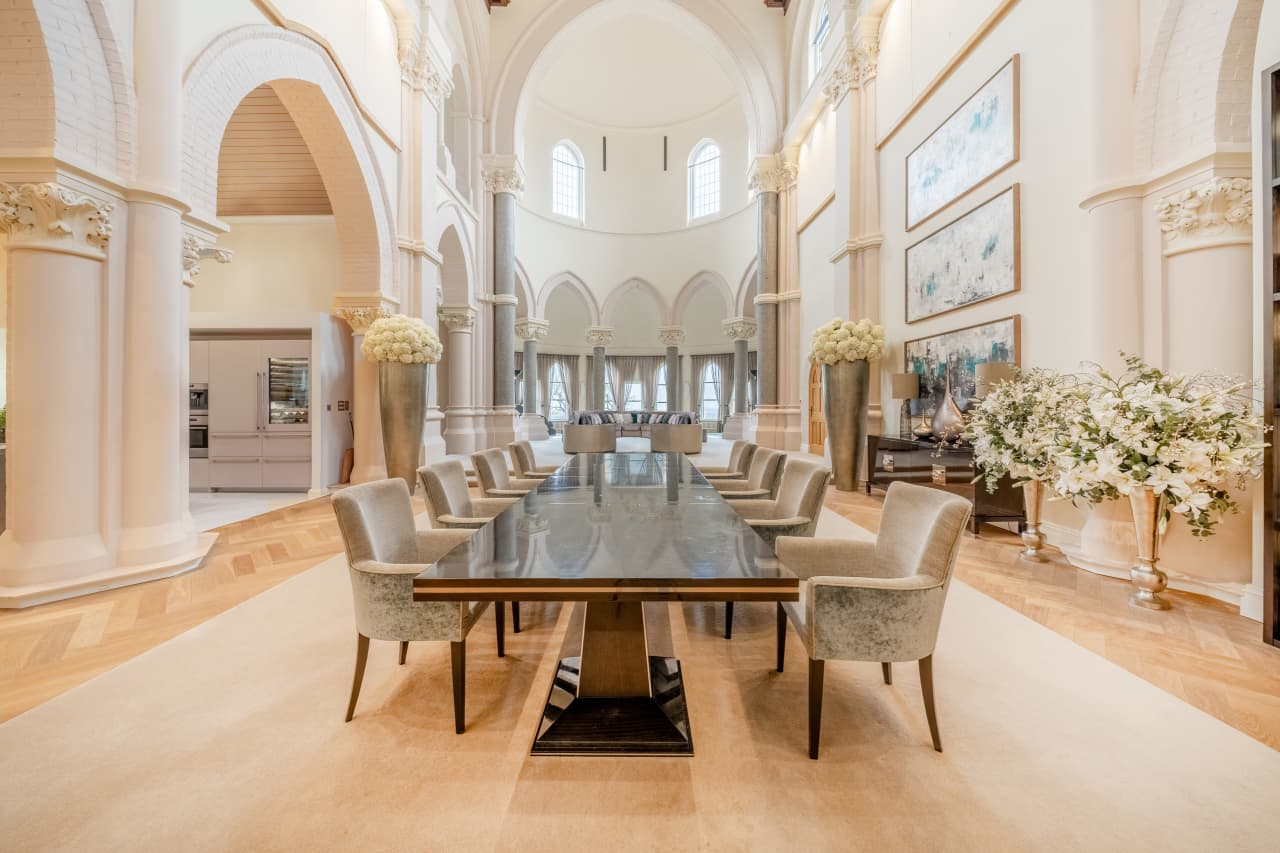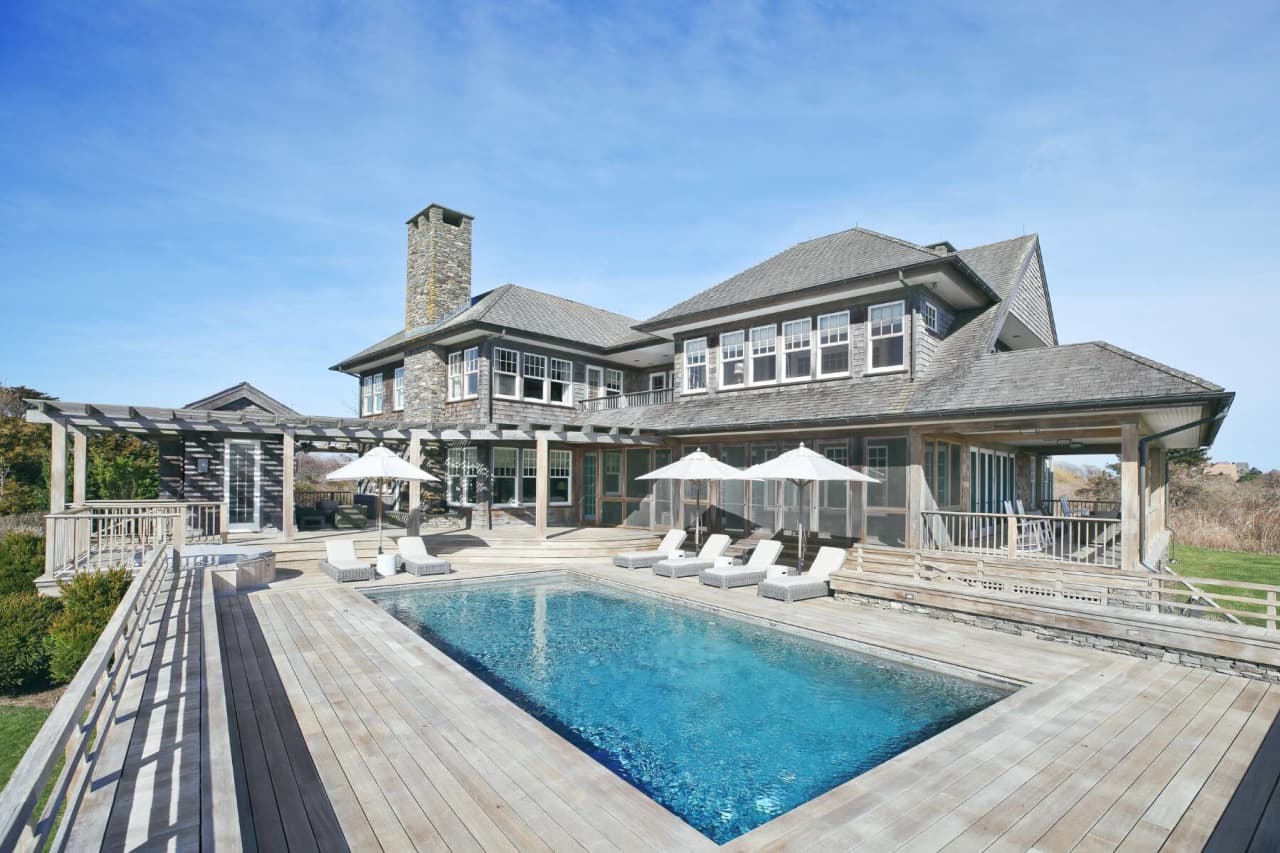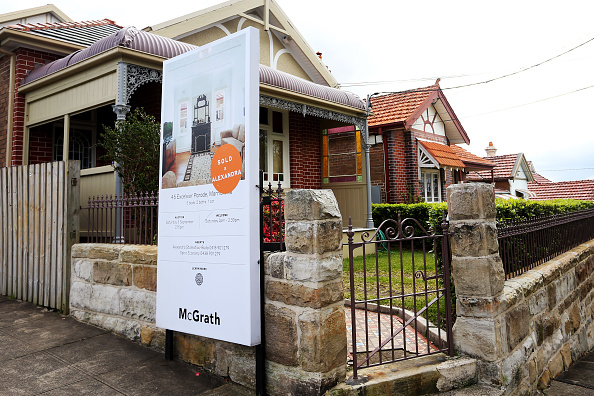A Mansion in Hong Kong’s Exclusive Peak Neighbourhood Poised to Set a Price Record
A new mansion in an exclusive Hong Kong neighbourhood known as The Peak is said to have an offer for HK$1.2 billion (US$153 million) from a mainland Chinese buyer. If the deal goes through, the sale will translate to HK$255,000 per square foot, a record for a residential property in Asia.
The mansion, located on Barker Road, the same street as Alibaba founder Jack Ma’s HK$1.5 billion mansion, has 4,700 square feet of living space across four levels and features sweeping views of Victoria Harbour and city skylines, according to Chinese-language daily Hong Kong Economic Times (HKET).
The mansion was built on the site of a Grade II-listed, Spanish-style villa, known as Villa Blanca. The villa was owned by Hong Kong businessman Haking Wong, most famous for his commercial optical products, for nearly two decades from 1978 to 1998.
CSI Properties acquired the villa in 2011 for HK$200 million, and paid another HK$103.2 million four years later to expand the site, according to the public filings.
The developer began marketing the mansion earlier this year. A buyer from mainland China has offered HK$1.2 billion and the deal is expected to close soon, HKET reported, citing market sources.
CSI Properties did not immediately respond to a request for comment, and Mansion Global could not independently confirm details about the potential buyer or sale.
READ MORE: The Window Is Closing to Get a Deal as Hong Kong’s Home Market Perks Up
The current unit price record for a residential property in Asia was set in 2021, when an apartment at a development called Mount Nicholson sold for HK$140,800 per square foot, or a total of HK$639.8 million.
Hong Kong, where prime properties on average cost more than HK$34,700 per square foot, was ranked as the world’s second most expensive market following Monaco, according to a recent report by Knight Frank.
Bloomberg was the first global media to report the sale.
This article originally appeared in Mansion Global.
 Copyright 2020, Dow Jones & Company, Inc. All Rights Reserved Worldwide. LEARN MORE
Copyright 2020, Dow Jones & Company, Inc. All Rights Reserved Worldwide. LEARN MORE
This stylish family home combines a classic palette and finishes with a flexible floorplan
Just 55 minutes from Sydney, make this your creative getaway located in the majestic Hawkesbury region.
New research suggests spending 40 percent of household income on loan repayments is the new normal
Requiring more than 30 percent of household income to service a home loan has long been considered the benchmark for ‘housing stress’. Yet research shows it is becoming the new normal. The 2024 ANZ CoreLogic Housing Affordability Report reveals home loans on only 17 percent of homes are ‘serviceable’ if serviceability is limited to 30 percent of the median national household income.
Based on 40 percent of household income, just 37 percent of properties would be serviceable on a mortgage covering 80 percent of the purchase price. ANZ CoreLogic suggest 40 may be the new 30 when it comes to home loan serviceability. “Looking ahead, there is little prospect for the mortgage serviceability indicator to move back into the 30 percent range any time soon,” says the report.
“This is because the cash rate is not expected to be cut until late 2024, and home values have continued to rise, even amid relatively high interest rate settings.” ANZ CoreLogic estimate that home loan rates would have to fall to about 4.7 percent to bring serviceability under 40 percent.
CoreLogic has broken down the actual household income required to service a home loan on a 6.27 percent interest rate for an 80 percent loan based on current median house and unit values in each capital city. As expected, affordability is worst in the most expensive property market, Sydney.
Sydney
Sydney’s median house price is $1,414,229 and the median unit price is $839,344.
Based on 40 percent serviceability, households need a total income of $211,456 to afford a home loan for a house and $125,499 for a unit. The city’s actual median household income is $120,554.
Melbourne
Melbourne’s median house price is $935,049 and the median apartment price is $612,906.
Based on 40 percent serviceability, households need a total income of $139,809 to afford a home loan for a house and $91,642 for a unit. The city’s actual median household income is $110,324.
Brisbane
Brisbane’s median house price is $909,988 and the median unit price is $587,793.
Based on 40 percent serviceability, households need a total income of $136,062 to afford a home loan for a house and $87,887 for a unit. The city’s actual median household income is $107,243.
Adelaide
Adelaide’s median house price is $785,971 and the median apartment price is $504,799.
Based on 40 percent serviceability, households need a total income of $117,519 to afford a home loan for a house and $75,478 for a unit. The city’s actual median household income is $89,806.
Perth
Perth’s median house price is $735,276 and the median unit price is $495,360.
Based on 40 percent serviceability, households need a total income of $109,939 to afford a home loan for a house and $74,066 for a unit. The city’s actual median household income is $108,057.
Hobart
Hobart’s median house price is $692,951 and the median apartment price is $522,258.
Based on 40 percent serviceability, households need a total income of $103,610 to afford a home loan for a house and $78,088 for a unit. The city’s actual median household income is $89,515.
Darwin
Darwin’s median house price is $573,498 and the median unit price is $367,716.
Based on 40 percent serviceability, households need a total income of $85,750 to afford a home loan for a house and $54,981 for a unit. The city’s actual median household income is $126,193.
Canberra
Canberra’s median house price is $964,136 and the median apartment price is $585,057.
Based on 40 percent serviceability, households need a total income of $144,158 to afford a home loan for a house and $87,478 for a unit. The city’s actual median household income is $137,760.
Just 55 minutes from Sydney, make this your creative getaway located in the majestic Hawkesbury region.
Consumers are going to gravitate toward applications powered by the buzzy new technology, analyst Michael Wolf predicts



